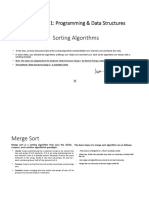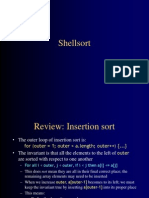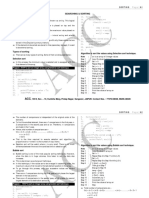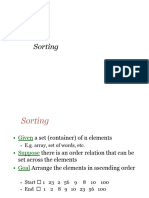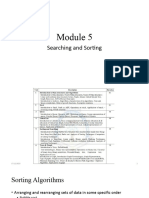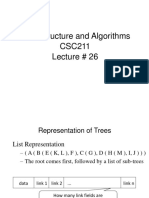0% found this document useful (0 votes)
231 views9 pagesRadix, Bucket and Shell Sort
Radix sort is a sorting algorithm that is useful for sorting keys that have a small range of values, such as short integers. It is integral to suffix array construction algorithms and useful on parallel machines. However, it is less flexible than other sorts as it depends on the type of data, takes more space than in-place sorts like quicksort, and has a greater constant than other algorithms.
Uploaded by
King Shah 673Copyright
© © All Rights Reserved
We take content rights seriously. If you suspect this is your content, claim it here.
Available Formats
Download as PDF, TXT or read online on Scribd
0% found this document useful (0 votes)
231 views9 pagesRadix, Bucket and Shell Sort
Radix sort is a sorting algorithm that is useful for sorting keys that have a small range of values, such as short integers. It is integral to suffix array construction algorithms and useful on parallel machines. However, it is less flexible than other sorts as it depends on the type of data, takes more space than in-place sorts like quicksort, and has a greater constant than other algorithms.
Uploaded by
King Shah 673Copyright
© © All Rights Reserved
We take content rights seriously. If you suspect this is your content, claim it here.
Available Formats
Download as PDF, TXT or read online on Scribd
/ 9







